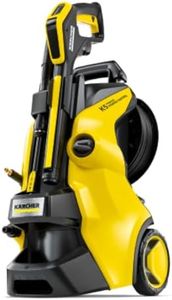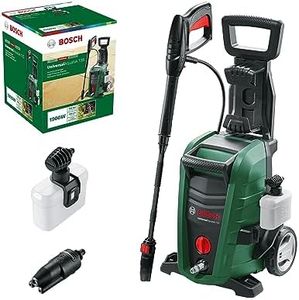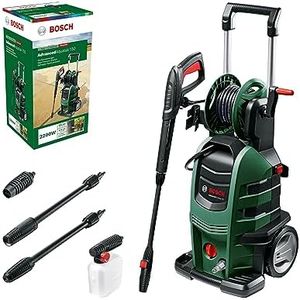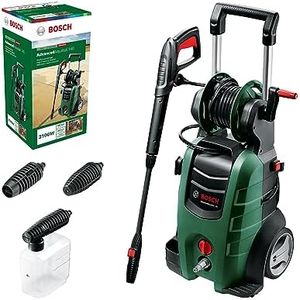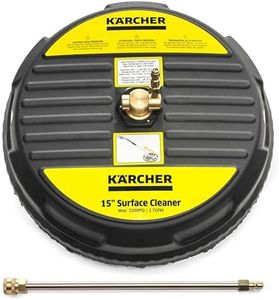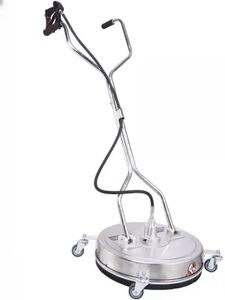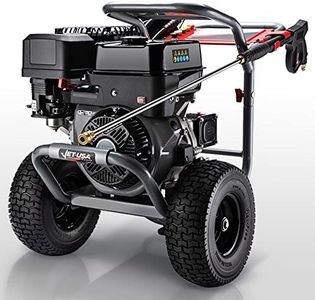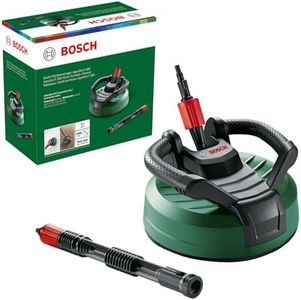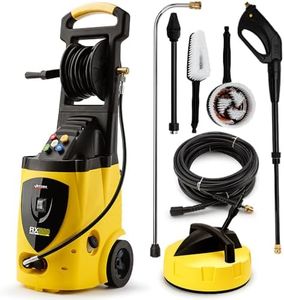We Use CookiesWe use cookies to enhance the security, performance,
functionality and for analytical and promotional activities. By continuing to browse this site you
are agreeing to our privacy policy
10 Best Surface Washers
From leading brands and best sellers available on the web.Buying Guide for the Best Surface Washers
Choosing a surface washer can make cleaning outdoor areas like driveways, patios, and decks much faster and more effective than using a standard pressure washer nozzle. The key is to match the surface washer to your cleaning needs and the equipment you have, ensuring it can handle the types of surfaces and levels of dirt or grime you need to tackle. By understanding the main features and how they impact performance, you'll be able to select a surface washer that makes your cleaning routine easier and more efficient.Cleaning Path (Diameter)The cleaning path, measured by the diameter of the washer head, indicates the width of the area the surface washer can clean in a single pass. A larger diameter covers more ground quickly and is best for big, open spaces like driveways or parking areas. Smaller diameters work well for tight spaces, steps, or around obstacles. If you mostly have wide and clear open areas, go for a bigger surface washer. If your cleaning jobs require maneuvering in narrow spots or around furniture, a smaller size will be much easier to manage.
Pressure Rating (PSI)The pressure rating, often shown in pounds per square inch (PSI), tells you how much water pressure the surface washer can handle. Light-duty models typically handle up to 2000 PSI and suit smaller electric pressure washers or lighter cleaning jobs. Medium-duty washers go up to 3000 PSI, good for most home use, while heavy-duty models can exceed 4000 PSI, fitting professional or industrial-grade tasks. To pick the right one, match the PSI rating to your pressure washer output and your cleaning needs. If your surfaces collect light dirt or you have a less powerful washer, low to medium PSI is enough. For stubborn stains or using a powerful washer, you’ll need a matching high-PSI unit.
Connector CompatibilityThis feature tells you what kind of pressure washer wands or hoses the surface washer will attach to, usually described by connection size and type. Most residential models use a common quick-connect fitting, while some require threaded connections or adapter pieces. Compatibility is important because an incompatible connector means you can't attach the washer, or might need extra adapters. Always check what connector your pressure washer uses and compare it with the surface washer spec to ensure a hassle-free fit.
Number of NozzlesSurface washers use spinning nozzles under the cleaning deck to spray water evenly. More nozzles typically provide more thorough and faster cleaning coverage, but can also require more water flow (GPM) from your pressure washer. Smaller units often use two nozzles, which is usually enough for typical household surfaces. Larger, professional models may have three or more for even cleaner results on bigger jobs. Consider how much cleaning power and speed you want, but keep in mind your pressure washer’s capability – too many nozzles need more water flow than some machines can provide.
Build MaterialThe material of the surface washer affects its durability and weight. Common materials are plastic, stainless steel, and aluminum. Plastic is lightweight and affordable, ideal for occasional or light use. Metal bodies, such as steel or aluminum, can withstand more frequent or tough jobs and often last longer. If you’re planning frequent cleaning or working on rough surfaces like concrete, choose a sturdier build, while lighter models are easier to carry and store for simple tasks.
Mobility Features (Wheels, Handles)Mobility features such as wheels and assist handles make it easier to move the surface washer across large or uneven surfaces. Wheels reduce fatigue and let you clean for longer without pushing hard. A good handle helps with maneuvering and can be important if you have a large area or heavy washer. Think about your physical comfort and the size of the area you’ll be tackling: features that improve mobility can make big cleaning jobs much less tiring.
